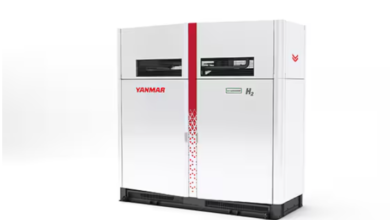DoE funds Oberon rDME project to scale renewable hydrogen production
The project is expected to build a solid foundation to show that rDME can be a pathway to help decarbonise the transportation sector.

The US Department of Energy (DOE) has funded a public-private partnership (PPP) renewable hydrogen production technology project between Los Alamos National Laboratory and Oberon Fuels, a California based company.
The project aims to scale up steam reforming technology to produce renewable hydrogen (rH2) from renewable dimethyl ether (rDME) at the point of use. Renewable DME has the potential to resolve the two major growth impediments, which are the lack of cost-competitive, sustainable production and lack of energy-dense storage and transport.
DME is a hydrogen-rich molecule that can be produced from waste or renewable resources using Oberon’s modular production technology. Given that DME can be handled as propane/liquefied petroleum gas (LPG) so would require minimal modifications to the existing global LPG distribution network while using the existing workforce.
The funding came from DOE’s Technology Commercialisation Fund, which funds mature energy technologies with a high potential of success and impact. The funding body is also part of the DOE’s ‘H2@Scale’ initiative, aiming to expedite the development of a hydrogen economy by financing advanced-technology research, development, and demonstration (RD&D) with industrial partners.
This project builds on a previous ‘bench-top’ demonstration of a DME steam reforming process conducted by researchers at the Laboratory, which produced 0.018 kg/day hydrogen. The aim is to ramp up production to 25 kg/day. The project will lay the foundation for further scaling the process from 25 to 500 kg/day of renewable hydrogen, more than enough for an average hydrogen filling station demand for light-duty vehicles.
Oberon started commercial production of the first-ever renewable DME in the US at its facility in Brawley, California, this month by using waste methanol from the pulp and paper industry. Biogas from dairy waste, food wastes, agricultural waste, excess electricity and CO2 can also be used as other potential feedstocks.
Rebecca Boudreaux, CEO of Oberon Fuels, said, “Our novel approach to generating hydrogen flips the current model on its head. We are producing a hydrogen-rich molecule, moving it using existing, low-cost infrastructure, and converting it to hydrogen fuel on demand.”
Troy Semelsberger, a Technical Staff Member at Los Alamos National Laboratory, said, “We believe DME is ideally suited for the H2@Scale effort.”
Elliot Hicks, CTO of Oberon Fuels, said, “The team at Los Alamos National Laboratory has already shown the advantages of DME-to-hydrogen reforming including lower reaction temperatures, which can reduce the operating costs and the system footprint.”
rDME has several attributes that make it an excellent carrier molecule for transporting hydrogen, such as:
- DME is particularly dense in hydrogen, with six hydrogen atoms in each DME molecule.
- DME can be made from a wide variety of renewable feedstocks at or near the source.
- DME liquefies at low pressure (~73 psi), making it much easier and less expensive to transport than hydrogen, which can be compressed at up to 10,000 psi of pressure.
- Converting DME into hydrogen is a simple, inexpensive process compared to natural gas to hydrogen conversion.
